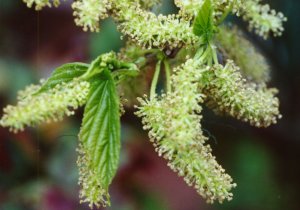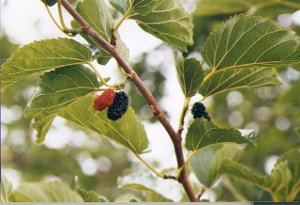Allergy Free Gardening

Allergy-Free New York - New York Times
Too Much Pollen? Blame the Males - All Things Considered
Safe Sex in the Garden - Weekend Edition
If you are suffering from allergies, tree and plant pollen may be the reason.
| Dioecious Landscape Plants |
Different species of plants produce different amounts of pollen. Some very beautiful, showy, fragrant flowering plants produce very little pollen per flower. With a dioecious plant it is the other way around...the male trees produce vast multitudes of pollen flowers, and each of these contains many thousands of grains. The "reason" that dioecious male trees or shrubs need to produce so much pollen is again...because the female plants might not be close by. More pollen is produced, it is smaller, lighter, shaped to float better....and because of all these factors, a great many people have been exposed to this kind of pollen. They've been exposed year after year, and before them, so were their parents, their grandparents. Instead of getting used to it, instead of becoming immune to this kind of pollen, it has worked just the opposite. Allergies arise, always, from repeated over-exposure over time to a possible allergen. Each word is key here...repeated, over-exposure, over time. So, all of us have been exposed to this pollen from the dioecious males....some of us, depending on where we lived, etc....some of us more than others, some less so. For the reasons outlined above, it is crucial that we do not include many, if any, male selections in our landscapes...as these will be the first ones to trigger allergies...or asthma. Asthma by the way, is most likely only to be triggered by the very smallest pollen grains, as only the smallest ones are able to be inhaled deeply, into the lungs. The beauty of the dioecious species however, something that was over-looked for centuries, is that while the female plants (pistillate) receive pollen (and turn it into seed), they do not produce or shed any pollen. This makes them pollen-free plants, true allergy-free plants...the best of the best when we're trying to eliminate or reduce allergies in the planted landscape. Dioecious plants are considered to be evolutionarily advanced, because they can not “self” themselves, they can not pollinate themselves, as many plants can. Each seed produced by an individual female of a dioecious species, each seed she produces came as the result of a cross, a mating with the pollen from a different individual plant, from the pollen of a male plant growing somewhere else. This process eliminates weaknesses from inbreeding and it encourages out-breeding. A few examples of common dioecious landscape plants: yew, poplar, willow, ash, mulberry, holly, juniper, pepper trees, Pistache, pistachio, red maple, box elder, Podocarpus, aspen, currant, sumac, carob, Osage orange, sassafras, and bay laurel. |

 Male mulberry tree pollen flowers
Male mulberry tree pollen flowers